PCK was involved in the construction of the Marshal Piłsudski Mound in Sowińce, Krakow in 1936.

In 1934, the Legionnaires' Association was established in Krakow and initiated the construction of a commemorative mound, serving as a monument to the struggle for Independence. The committee appointed in Warsaw to build the mound was chaired by Walery Sławek. On the twentieth anniversary of the departure of the 1st Cadre Company from Krakow to Kielce (August 6, 1934), the construction of the mound began. After the death of Józef Piłsudski, it was decided to name the unfinished mound after him, and the activity of building it involved the broad Polish society. The construction of the mound became a kind of ceremony, with many Polish and foreign delegations coming to Sowiniec. The authorities of Krakow facilitated the participants' access to Sowiniec by issuing special municipal transport tickets.
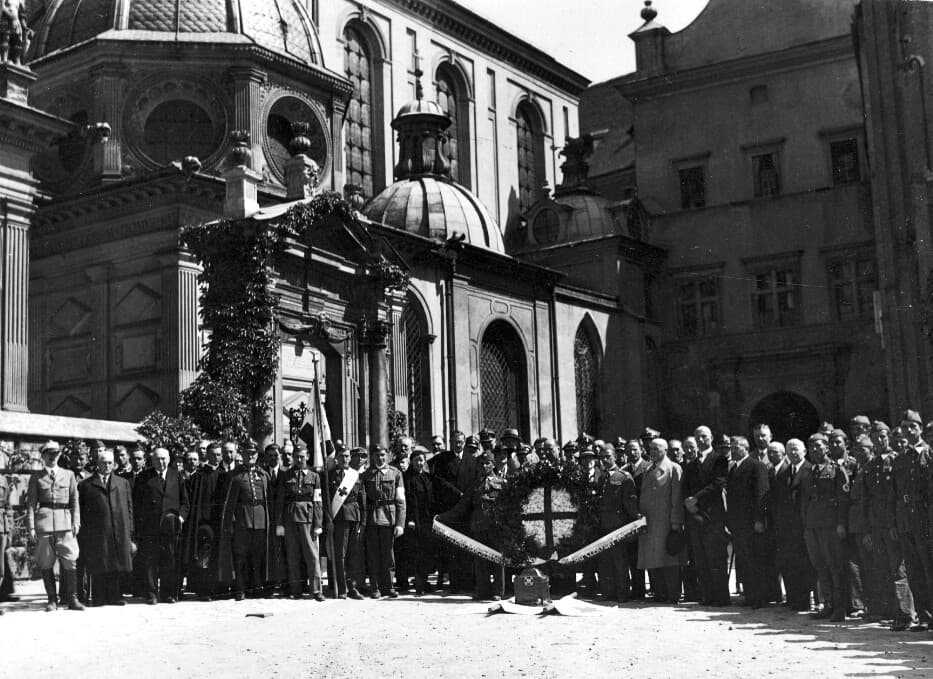
At the initiative of the Krakow Branch, the Polish Red Cross also decided to join the mound-building activity and transport soil collected from Red Cross facilities across the country to Sowiniec. On May 17, 1936, a General Assembly of the Polish Red Cross was convened in Warsaw, where delegates from all districts and the Gdańsk Branch appeared with soil collected from all branches in the country, which they deposited in a specially prepared urn. A delegation consisting of members of the Main Board of the Polish Red Cross, led by President Kuhn, members of the Main Committee, and district delegates set out for Krakow to pay tribute to Marshal Piłsudski and place the urn with the soil at Sowiniec. The delegation participated in the Holy Mass at Wawel Cathedral on the morning of May 18, after which a wreath with the inscription 'To Marshal Józef Piłsudski – Polish Red Cross' was laid at the tomb of the Marshal in St. Leonard's Crypt.
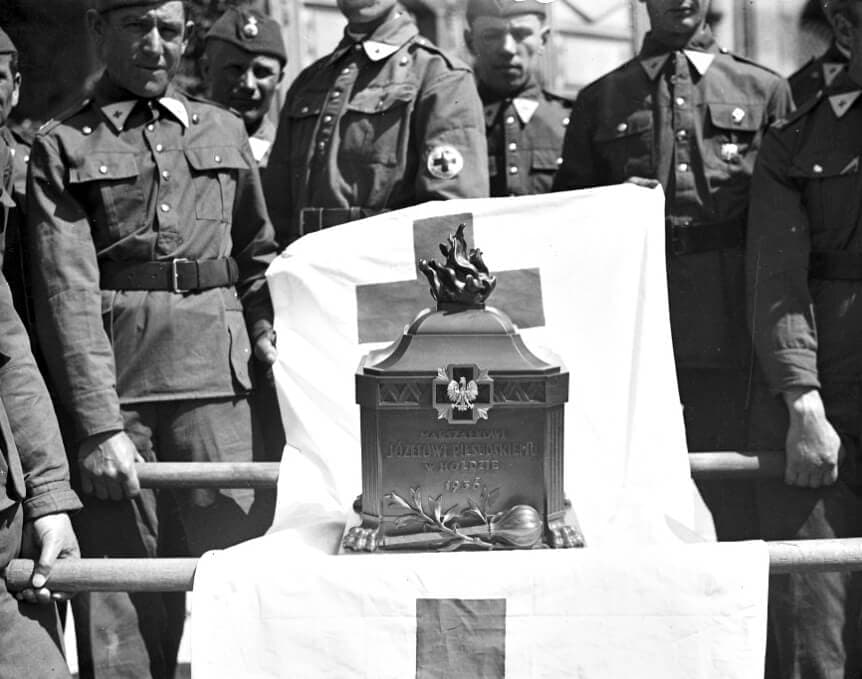
From Wawel, the delegation traveled to Sowiniec. In the attendance of the banner, the rescue team of the Polish Red Cross brought the urn to the mound and solemnly poured the soil contained within. The ceremony had an extremely solemn character. It was a symbolic tribute of the Polish Red Cross to the Marshal, who supported our organization during his lifetime.
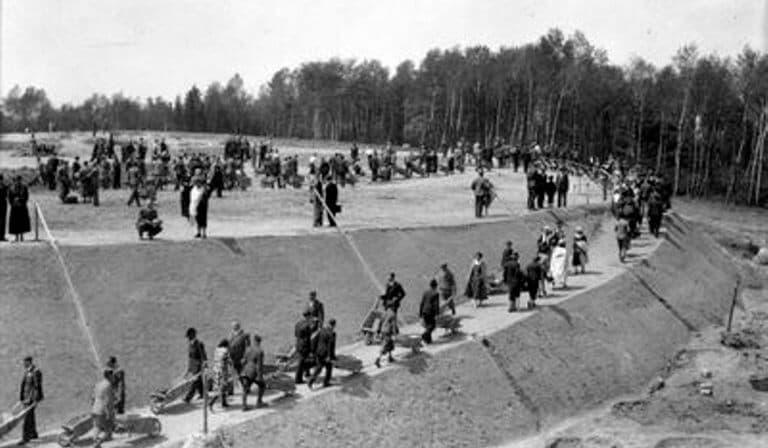
Additionally, the Krakow Branch of the Polish Red Cross played a significant role in assisting with the construction of the Piłsudski Mound. Due to the numerous excursions and delegations arriving in Krakow to pay tribute to the Marshal, the Krakow Branch organized sanitary and rescue points at Wawel, Sowiniec, and the train station to provide emergency assistance. Sisters of the sanitary rescue service and rescuers served at the points. The point at Sowiniec and at Wawel and the station provided assistance in 4753 cases from spring to autumn 1935. This activity received high recognition not only from the central authorities of the Polish Red Cross but from society as a whole.
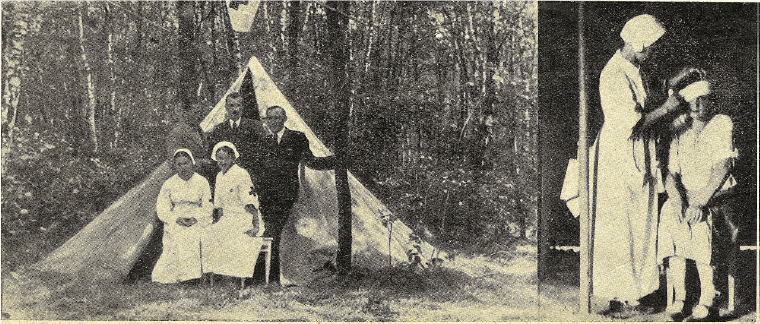
Marshal Józef Piłsudski spoke about the Polish Red Cross:
'An injured and sick soldier is a military orphan. He suddenly enters, as a byproduct of great war production, into a soulless, complicated machine, powerless, anxious, often helpless. It takes great efforts to make a maternal heart work in this machine, which loves precisely that unfortunate and painful child, who is therefore useless for work, and in this lies the noble and great task of the Red Cross in time of war...'
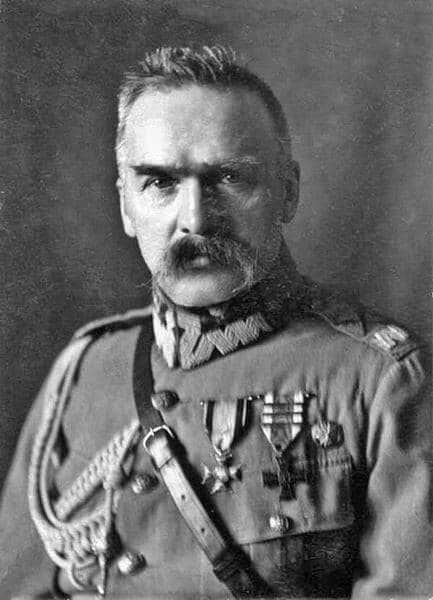
The Piłsudski Mound is about 35 m high and has a volume of 130 thousand m³. The height of Sowiniec, on which it stands, is 358 m above sea level, and its base diameter is 111 m.
Facts about the Polish Red Cross
Only after the fourth request to the International Red Cross was the Polish Red Cross recognized on the international stage.
The beginnings of blood donation in the Red Cross date back to 1935, which took place 83 years ago.
If the borders of Poland had not been changed after World War II, the 100th anniversary of the Polish Red Cross (PCK) would have been celebrated with the Lviv, Volhynian, and Wilno branches, which are still active today but under the structures of different state associations.
The employees of the Polish Red Cross carried out the exhumation of Polish officers murdered in the Katyn Forest while also being responsible for creating the official Katyn Lists
The Red Cross movement and its foundations were the source for the establishment of sanitary services for wounded soldiers under the names Polish White Cross and Polish Green Cross.
Over the years, the rules for statutory financing of the PCK's activities have changed, as has our role and position within the state.
The PCK enjoyed immense public trust during the Second Polish Republic, and the most important figures in the state always spoke about our organization with the utmost respect.
To this day, in Tarnów, Małopolska, there is a nearly 100-year tradition of parades through the city organized on the occasion of the Polish Red Cross Week.
On February 8, 2018, it was 50 years since the establishment of the badge of the Honorable Blood Donor
On February 8, 2018, it marked 50 years since the establishment of the badge of the Meritorious Honorary Blood Donor
PCK never accepted any gratifications and did not support the Nazi authorities, thereby exposing itself to severe consequences.
The Polish Red Cross was the initiator of healthcare in rural areas during the interwar period and the establishment of the first village health centers.
PCK was involved in the construction of the Marshal Piłsudski Mound in Sowińca in Krakow in 1936
At the beginning of 1919, within the structures of the newly established Polish Red Cross Society, 3 District Branches of the PTCK were created: for Galicia, the Grand Duchy of Posen, and Silesia.
During its 100-year activity, the Polish Red Cross, the International Committee of the Red Cross, honored 102 Polish nurses associated with our organization with the Florence Nightingale Medal.
The Polish Red Cross was the organizer of parachuting courses
Did two Polish doctors working at the Red Cross hospital during World War II save more lives than Oskar Schindler?
There existed simultaneously the Polish Red Cross and the Polish White Cross, whose president was Helena Paderewska.
There was a time in the history of PCK when, legally, two or even three Main Boards of PCK operated simultaneously.
Help us endlessly
Thanks to the kindness and support of our Donors, we can help children, seniors, support medical rescuers, promote the idea of blood donation, and implement many other projects that save lives in times of conflict or humanitarian crises. Every donation and every form of support is significant because the Polish Red Cross connects those in need with those who want to provide help. Let’s help together!
See also
In early 1919, within the structures of the newly established Polish Red Cross Society, 3 Regional Branches of the Polish Red Cross Society were created: for Galicia, the Grand Duchy of Posen, and Silesia.
As of August 1, 1919, the organizational structure changed and 4 Regional Committees were already functioning: Lesser Poland, Greater Poland, South-Eastern, and Polesie-Minsk. Our organization as a whole will celebrate its 100th anniversary, however, the history and operational period of individual local branches differ.
The Polish Red Cross was the initiator of healthcare in the countryside during the interwar period and the establishment of the first rural health centers.
Despite the expansion of the health center network by the state and local governments, as well as the Social Insurance Institution, residents of the villages acutely felt the lack of medical care. The idea of creating health centers in the villages was proposed by Countess Maria Tarnowska, Vice President of the Polish Red Cross, who was a trained nurse.
You are currently viewing a page filtered by content from the department. Cała PolskaIf you want to view content from Cała Polskaclick the button